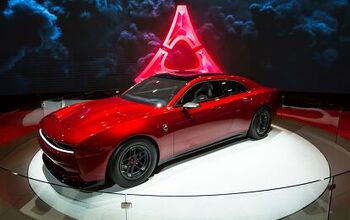Microsoft Mines Brains Of Chinese Taxi Drivers

It’s a well-kept secret, which will give the willies to people who are (at least publicly) worried about intellectual property: Microsoft has one of their best R&D centers in China. Located in the silicone gulch in the north of Beijing, MSRA (Microsoft Research Asia) is working on advanced technologies, mostly in the visual area. I worked with them once, and they are NFSWing good. They just had another great idea: Why not mine the knowledge of cab drivers when it comes to proposing the best route on your in-car navigation system?
Navigation systems usually provide two types of directions: The shortest-distance route, and the route that is fastest based on the length of the road and typical vehicle speed. Some augment them with real time traffic information – with mixed results.
“When selecting driving directions, taxi drivers usually consider multiple factors including distance, traffic flow and signals, direction changes, and the probability of accidents,” Zheng Yu, a researcher at Microsoft Research Asia (MSRA), told China’s Global Times.
So MSRA put GPS devices into more than 33,000 of the 80,000 Beijing taxis, and collected the data over three months.
“On average, 50 percent of our routes are at least 20 percent faster than the competing approaches,” says a report of by the MSRA. Earlier this year, an IBM survey had found that Beijing has the worst traffic in the world. At least Microsoft is doing something to get around it.
You are probably thinking the same as I did: What if all people suddenly know the hidden shortcuts? Microsoft thought of that as well. The taxi-based system, dubbed “T-Drive,” will dole out routes that try to balance the traffic.
Here’s an idea for MSRP: For their “T-Drive Ultimate,” I offer the data produced by a gizmo in my driver’s car. He (ab)uses bike lanes, bus lanes, takes shortcuts through hotel driveways, and sometimes goes down a one way street in reverse. I never missed a plane.

Bertel Schmitt comes back to journalism after taking a 35 year break in advertising and marketing. He ran and owned advertising agencies in Duesseldorf, Germany, and New York City. Volkswagen A.G. was Bertel's most important corporate account. Schmitt's advertising and marketing career touched many corners of the industry with a special focus on automotive products and services. Since 2004, he lives in Japan and China with his wife <a href="http://www.tomokoandbertel.com"> Tomoko </a>. Bertel Schmitt is a founding board member of the <a href="http://www.offshoresuperseries.com"> Offshore Super Series </a>, an American offshore powerboat racing organization. He is co-owner of the racing team Typhoon.
More by Bertel Schmitt
Latest Car Reviews
Read moreLatest Product Reviews
Read moreRecent Comments
- Calrson Fan Jeff - Agree with what you said. I think currently an EV pick-up could work in a commercial/fleet application. As someone on this site stated, w/current tech. battery vehicles just do not scale well. EBFlex - No one wanted to hate the Cyber Truck more than me but I can't ignore all the new technology and innovative thinking that went into it. There is a lot I like about it. GM, Ford & Ram should incorporate some it's design cues into their ICE trucks.
- Michael S6 Very confusing if the move is permanent or temporary.
- Jrhurren Worked in Detroit 18 years, live 20 minutes away. Ren Cen is a gem, but a very terrible design inside. I’m surprised GM stuck it out as long as they did there.
- Carson D I thought that this was going to be a comparison of BFGoodrich's different truck tires.
- Tassos Jong-iL North Korea is saving pokemon cards and amibos to buy GM in 10 years, we hope.


































Comments
Join the conversation
There should be a significant flat fee to take a cab. There would then be an incentive for the cab driver to take the fastest route since he would need to maximize the number of clients to maximize profits. He would also increase the number of tips from clients.
I spent a few months working as a parts-and-packages shipping/delivery/pick-up guy for a construction equipment dealer in south Seattle. Believe me, I knew all the shortcuts right down to which ones worked on which days and at which times of day. Guys with jobs like this would be a better bet for generic quick ways about town. Otoh, my destinations were somewhat limited...other parts houses, bus stations (in 1961 we were still shipping a lot of stuff by Greyhound), the main post office, one freight forwarder on the waterfront where we shipped parts bound for Hawaii or Alaska by boat fairly frequently. Speed was always important in that business. Construction guys or loggers need to have their equipment working so they can make the payments on those expensive machines, and if they don't get their parts as promised they're likely to come in and go right over your desk.